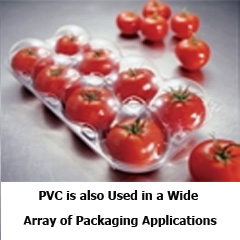Vinyl chloride, used to make PVC, has been identified by the Environmental Protection Agency as a carcinogen. Some forms of PVC contain lead. One environmental group names it “the poison plastic.” Michigan and Illinois are among the states that have recently enacted laws restricting lead levels in children's products that may result in removal of vinyl from the toys.
In 2003, however, the Consumer Product Safety Commission denied a motion by environmental groups to ban PVC in toys, saying that children were unlikely to chew on PVC toys long enough to cause harm.
Apparently, several major toy manufacturers are developing toys made without PVC, with the first introductions coming as early as this spring. They are keeping mum about substitute materials because of the proprietary techniques used to develop them. For example, Hasbro and Mattel are said to be using a plastic made from corn oil.
PVC is widely used in toy manufacturing. A recent random sampling of over 1200 toys by an environmental group claimed to find 47% contained at least some PVC.
After Toys, What Next?
 PVC is widely used in thousands of products outside of the toy industry. It is used extensively in the construction and building industries, in such areas as siding, insulation for electric wires, window frames, and more. It is very common in product packaging, and is also used in the manufacture of signs, in car interiors, shower curtains, among a wide range of applications. PVC is widely used in thousands of products outside of the toy industry. It is used extensively in the construction and building industries, in such areas as siding, insulation for electric wires, window frames, and more. It is very common in product packaging, and is also used in the manufacture of signs, in car interiors, shower curtains, among a wide range of applications.
It is still widely used for water piping, but concerns about its potential effects have led some companies to switch materials.
If pressure groups have continued success in the toy arena, it seems likely they will go after other product categories. Piping and packaging materials seem the next logical categories, as both can easily be positioned as having the risk of consumer ingestion of hazardous materials emitted from the PVC.
A move away from PVC will obviously have significant product design, manufacturing and cost implications for many manufacturers. Sensing the impending trouble, the Vinyl Association, an industry trade group, has recently launched a campaign to convince retailers and the public that PVC is safe.
"Some companies are being pressured and misled into having doubts about PVC," says Tim Burns, the group's president.
Is the concern over PVC in toys legitimate? What about in other applications? What kind of impact would the elimination of PVC have iin manufacturing and packaging? Let us know your thoughts at the Feedback button below. |